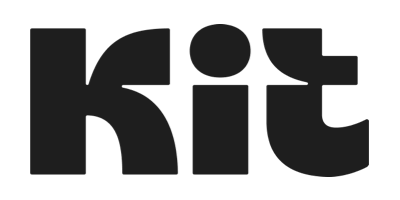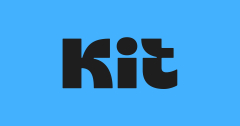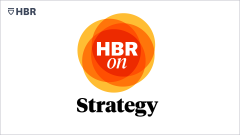If you’re looking for your next email marketing platform, and you’re curious if Kit is right for you, well, you’re in the right place! Here’s our comprehensive Kit review for 2024, which will cover:
- What Is Kit?
- Why do I need an email service provider (ESP)?
- The rebrand from ConvertKit to Kit
- Kit Features
- Kit Pricing
- Key Benefits of Kit
- Drawbacks of Kit
- Kit & Email Marketing: More Resources to Read, Listen & Learn
What is Kit?
Kit is an email service provider (ESP). Essentially, it’s a technology service that lets you send email campaigns to a list of subscribers. Kit is one of literally hundreds of ESPs out there, and—full disclosure—it happens to be the one we prefer and use at SPI.
Although we’re biased, we can still be objective! In this post, we’ll cover the features, benefits, and drawbacks of Kit as we see them, to help you decide if it’s the right ESP for your business.
Email marketing strategy: Why you need an ESP
If you’re reading this, you might already know what an ESP is and why you need one. But in case you don’t, an ESP is the most important piece of technology to support your email marketing strategy.
Email marketing is one of the most powerful methods to build relationships and market your products and services to your audience. Let’s talk about why that is.
In its most basic form, email marketing involves you sending emails to a group of people who’ve chosen to hear from you by “subscribing” to receive emails from you. You could technically use a simple email program like Gmail to accomplish this—but we don’t recommend it, because you’ll quickly find it insufficient (and because your personal email account will get flagged as spam if you send too many emails from it!).
As your business grows and more people subscribe to get your emails, you’ll want the ability to do more sophisticated things with your email marketing, like customizing the emails people get according to their interests, and using reports and analytics to determine what’s working well or not.
You also need to make sure you’re respecting people’s privacy and not spamming anyone. An email service provider also helps you to stay in compliance with government regulations around the world, such as the CAN-SPAM act in the United States, the General Data Protection Regulation in the European Union (GDPR), and the Canada Anti-Spam Law (CASL).
Things can quickly get out of hand without the help of a dedicated email marketing platform. That’s where an ESP like Kit comes in.
Okay, let’s get into the nitty gritty of Kit’s features!
Psst… Want to grow your email list and learn powerful segmentation and automation strategies that allow your business to run on its own? Check out the Email Marketing Magic course.
Kit features
These are the key features of Kit, organized by how you’ll use them.
Sending emails
- Autoresponders/drip campaigns (sequences): Send a sequence of pre-written emails automatically to a specific segment of subscribers on your list, triggered by a specific event or action, with the aim of guiding them to take a specific action.
- Broadcast emails: Send standard announcements or one-time emails to your subscribers on a specific date.
- CAN-SPAM, GDPR, and CASL compliance: CAN-SPAM, GDPR, and CASL are laws that set the rules and requirements for commercial email messages, and give recipients the right to have you stop emailing them—so compliance is crucial!
- Dynamic (personalized) email content: Your email content can display different text or images, according to your customer segmentation.
- Responsive email templates: Ready-to-go email designs, as well as the ability to create your own custom templates. Kit automatically formats your landing pages for various devices, such as desktop computers and mobile phones.
- WYSIWYG email editor: The built-in email editor lets you see how your email will look with your template’s styling applied while you’re composing it.
Collecting new subscribers
- Custom responsive landing pages: Use the included tool to quickly create a landing page to collect email addresses. Kit automatically formats your landing pages for various devices, such as desktop computers and mobile phones.
- Embeddable forms: Collect email subscribers anywhere on your website by dropping in a Javascript or HTML form, or by using the WordPress plugin.
- Site builder: Create a website directly on Kit to publish newsletters, host a digital storefront to collect payment for one-time or subscription products, and build custom pages. Set up a landing page and collect payment for one-time or subscription products right inside Kit.
- Visual automations: Kit allows you to create rule-based paths using if-then logic, so that when a subscriber takes a particular action, you can send them pre-defined emails or add them to a segment.
Learning about your subscribers
- A/B testing: Kit lets you test different subject lines for your emails, and automatically determines the winner based on their respective open rates.
- Reporting/analytics/ROI tracking: Learn how often your subscribers open your emails, click on links, and complete various actions.
- Segmentation/tagging: Segmenting your subscribers into different categories (similar to but more powerful than other programs’ “lists”) allows you to send them emails that are better tailored to their needs and interests.
- Polls. Add polls directly to emails to engage with and collect information about subscribers, which you can then use to build segments.
Growing your income
- In 2022, Kit Commerce was added to the platform, allowing users to try selling digital products to their subscribers by creating customized product pages that can be embedded in your emails, along with automated sales funnels.
- The current iteration of Kit also features a site builder. You can create a website directly on Kit to publish newsletters, host a digital storefront to collect payment for one-time or subscription products, and build custom pages.
Connecting with and supporting other creators: The Creator Network
- In 2023, Kit launched the Creator Network, which helps users guide their audience members to discover other creators and get discovered in turn.
- You can also get paid for Creator Network recommendations you make via the aptly named Paid Recommendations.
Expanding the platform’s capabilities: App store
- As part of the 2024 rebrand, they also launched an app store, where you can find custom apps to do more with Kit. The app store will launch with five apps: KitBoard (add CRM to your account), Wordsmith (turn YouTube videos into newsletters, SavvyCal (add booking widgets to emails), Mighty (connect your Mighty community and content with Kit), and SegMetrics (learn about how you gain, engage, and convert subscribers).
- Kit also offers a self-service app builder to create your own add-ons. (As of this writing, the service is currently in beta.)

Start your Kit account — free for your first 10,000 subscribers!
This is an affiliate link
From “ConvertKit” to “Kit”: Behind the rebrand
In summer 2024, the company previously known as ConvertKit officially became Kit. The new name was announced in July during the Craft + Commerce Creator Conference and went live in October. (They had previously rebranded to Seva in 2018, but considerable negative feedback to the new name caused them to revert to ConvertKit until this year.)
The change to Kit was more than a name change, though, because the company launched several big new capabilities to their platform as well. We covered some of the new features in the section above, but here are the highlights:
- An app store where developers can create add-ons to augment Kit’s capabilities
- A central data hub with enhanced reporting
- An expanded Creator Network to help users find new collaboration partners
Kit also made a point of rebranding in public by sharing information about the rebranding process through blog updates, live-streamed design sessions, and a four-part YouTube mini-documentary. This transparency gives an interesting insight into the company’s thinking. And we think it’s a smart move given how their previous rebrand went.
With that out of the way, let’s talk about pricing.
Kit pricing
For a long time, Kit only offered paid plans. But in December 2019, the company announced a new free tier if you have fewer than 1,000 subscribers. They recently expanded the free tier to include creators with up to 10,000 subscribers.
Here are Kit’s pricing options as of October 2024:
Kit Newsletter Plan
- $0/month for up to 10,000 subscribers
The Newsletter plan includes:
- 1 basic Visual Automation
- 1 email Sequence
- 1 user
- Unlimited landing pages, opt-in forms, and email broadcasts
- Audience tagging & segmentation
- Sell digital products
- Run paid newsletters & subscriptions
- Newsletter feed & website
- API Access
- Free Recommendations (required—at least one recommendation slot to grow your list by cross-promoting with other creators)
- Smart Recommendations (auto-recommendation of similar creators to help you grow your list)
- 24/7 support
Kit Creator Plan
- $9/month for up to 300 subscribers (paid annually; $15 if paid monthly)
- $25/month for up to 1,000 subscribers (paid annually; $29 if paid monthly)
- Tiered pricing up to $1,916/month (paid annually; $1,916 if paid monthly) for up to 400,000 subscribers
The Creator plan includes:
- All the features of the Newsletter plan
- Unlimited Visual Automations
- Unlimited email Sequences
- 2 users
- Free migration from another tool
- Free Recommendations
- Paid Recommendations
- Remove Kit branding
- Third-party integrations
- RSS campaigns
- Polls
Kit Creator Pro Plan
- $25/month for up to 300 subscribers (paid annually; $29 if paid monthly)
- $50/month for up to 1,000 subscribers (paid annually; $59 if paid mont





